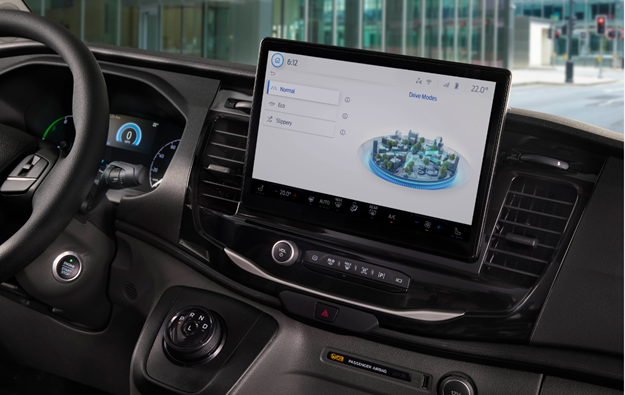Range of BEV and PHEV options on their way after next year’s van launch
Ford Australia’s is laying the foundations for its E-Transit van launch, revealing a strategy aimed at providing at least five new electrified vehicles by the end of 2024.
The new Ford E-Transit will is planned to debut in mid-2022.
The US behemoth’s “electrification roadmap” will include many of the company’s already common nameplates while introducing new models that will diversify and broaden its local vehicle range.
These will be made up of battery electric vehicles (BEVs) largely, while plug-in hybrids (PHEVs) will also play a role, “offering a vehicle to meet the lifestyle requirements of every Australian customer”.
“We are accelerating our electrified future in Australia,” Ford Australia and New Zealand president and CEO Andrew Birkic said.
“We are anticipating the needs of each type of customer and bringing the best of our global line-up to meet those requirements.
“For business customers, E-Transit delivers the durability and capability they need to serve their customers, along with zero-emissions efficiency.”
Based on European Union technical requirements and its own calculations, Ford claims a driving range for the van of up to 317km, “more than 2.5 times the average distance a commercial van travels each day”, depending on conditions.
As with specs and pricing, ADR 81/02 certified range will be announced closer to its Australian launch.
Running
Ford Australia is collaborating with EV charging infrastructure firm JET Charge its dealer network’s needs.
This is as part of a launch framework that includes: extensive in-house training programs; a select network of dealers with specialist EV workshop equipment; end-user maintenance routines in readiness for the first vehicles to arrive.
Ford will also install charging stations at its Victorian facilities in Campbellfield, the YouYangs Proving Ground, and at the company’s new logistics hub at Merrifield.
The full-size E-Transit will begin to arrive in rear-wheel drive 420L long wheel-base configuration from mid-2022, after the Escape PHEV makes its debut as Ford’s first locally available plug-in hybrid variant.
“For 56 years, Transit has been the first choice for getting the job done, and we’re again moving the game on with this fully electric version,” Transit retail and product marketing manager Anna Hercan said.
“Our business customers tell us how important it is for them to have their van ready whenever it’s needed.
“E-Transit has more than enough range for a full day’s work, can fully charge overnight so it’s ready for the next morning and there’s no sacrifice in its load carrying capacity or convenience.”
Propulsion
With a usable battery capacity of 68 kWh, the rear-wheel drive layout vehicle’s electric motor has a peak output of 198kW and 430Nm of torque, making it the most powerful Transit currently available in Australia.
E-Transit’s drive modes are tailored to its electric powertrain, Ford points out.
A special Eco Mode can provide between 8-10 per cent improvement in energy usage if E-Transit is driven unladen, or at highway speeds.
Eco Mode limits top speed, regulates acceleration and optimises climate control to help maximise the available driving range.
The vehicle also supports Scheduled Pre-Conditioning, enabling the climate control system to be programmed to adjust the cabin to the preferred temperature while the vehicle is still on charge, ensuring that the maximum driving range is available.
E-Transit features both AC charging and DC fast-charging.
Its 11.3kW on-board charger is said to be capable of delivering a 100 per cent charge in up to 8.2 hours.
Charging with up to 115 kW using a high-power DC fast-charger, E-Transit can top-up the battery from 15 per cent to 80 per cent in around 34 minutes.
Ford notes that charging rate decreases as battery reaches full capacity and that results may vary based on peak charging times and battery state of charge.
Structure
“Ford engineers designed E-Transit’s driveline and rear suspension system to optimise cargo space, locating the battery underneath the body and creating a heavy-duty semi-trailing arm suspension system that enables better steering precision and more confident handling, plus better traction in both laden and unladen conditions,” the manufacturer stated.
This also allows for cargo capacity of up to 11.3 cubic metres in mid-roof specification and 12.4 cu m for the high-roof version, both of which are identical to the Transit 350L RWD diesel equivalents.
Gross vehicle mass of up to 4.2 tonnes is offered, with a targeted payload of 1,616 kg.
Ford will offer its five-year, unlimited kilometre service offering that sits alongside the eight-year, 160,000 km warranty package for the battery and high-voltage electric components.





.PNG)
